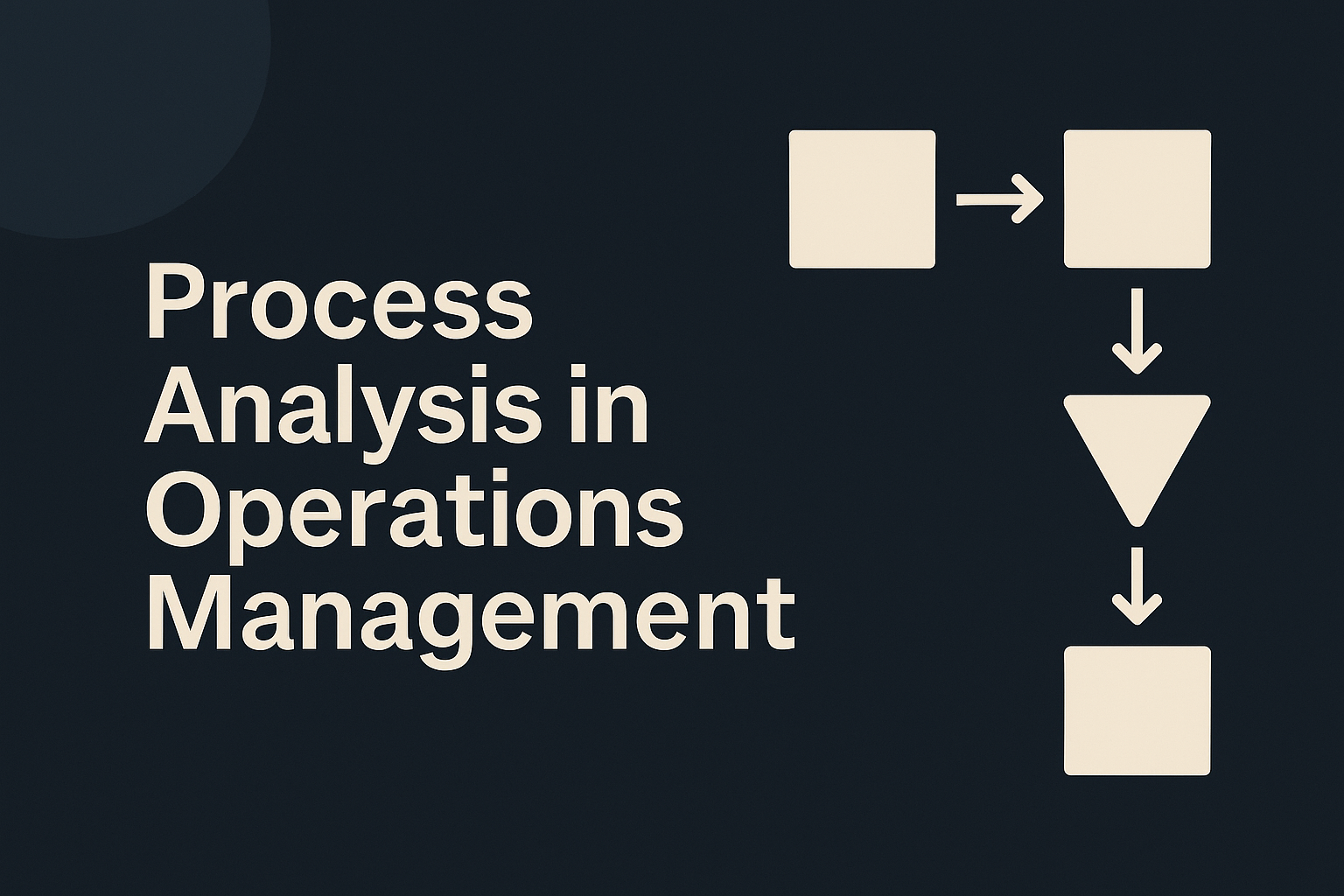🚚 Operations Management — The Simple Version
Operations management is basically:
👉 How people + machines work together to get things done efficiently.
which means:
“Go and see it yourself.”
Don’t sit in an office and guess.
Go to the yard, go to the shop, go to the dispatch room — see the real problem with your own eyes.
📍 The Big Idea
Every business looks the same from far away:
- You take something (input)
- You do work on it
- You create something valuable (output)
- You sell it
But inside the operation, every business is different.
That’s why we use general tools that work anywhere — trucking, CDL school, fleet maintenance, restaurants, anything.
🔧 Everything Is a Process
A process is simply:
Input ➝ Work ➝ Output
Example:
- Trucking company:
Load request ➝ assign driver ➝ pickup ➝ delivery ➝ POD - CDL school:
Student ➝ training ➝ test ➝ graduation
🔑 Flow Unit (Very Important)
A flow unit is what you are tracking through the process.
Examples:
- Trucking: a load
- CDL school: a student
- Mechanic shop: a truck
- Hospital: a patient
- Factory: a guitar or car
This is the “thing” moving through your system.
🧰 Resources
Resources are:
- People
- Machines
They add value to the flow unit.
Example:
- A dispatcher schedules the load
- A mechanic repairs the truck
- A trainer teaches the student
⏱️ Processing Time
Every resource takes time to do their job.
Examples:
- Dispatcher books a load: 3 minutes
- Mechanic does inspection: 30 minutes
- Trainer gives pre-trip lesson: 20 minutes
🏭 Capacity
Capacity = How many units a resource can handle per hour/day.
Examples:
- Dispatcher can book 20 loads/day
- Mechanic can repair 4 trucks/day
- Trainer can teach 10 students/day
🔥 The Bottleneck (Most Important Concept)
The bottleneck is:
👉 The slowest step in your process.
👉 It decides how fast your entire business can run.
Example:
- If you have 50 students but only 1 trainer,
the trainer is the bottleneck. - If you have 30 drivers but only 1 mechanic,
the mechanic shop is the bottleneck. - If dispatch can book 100 loads but you have only 20 trucks,
trucks/drivers are the bottleneck.
Your total output can NEVER be faster than your bottleneck.
📊 The 3 Most Important Metrics
1️⃣ Flow Rate (a.k.a. Throughput)
How many flow units complete the process over time.
Examples:
- 100 loads per week
- 25 students per month
- 6 trucks repaired per day
Flow rate = the smaller of:
- Demand
- Capacity (your bottleneck)
2️⃣ Inventory
How many flow units are currently in the system.
Examples:
- Trucks waiting in repair shop = inventory
- Students waiting for training = inventory
- Loads waiting for pickup = inventory
This is NOT accounting inventory.
It’s simply how many items are in the process at the moment.
3️⃣ Flow Time
How long it takes for one flow unit to go from start ➝ finish.
Examples:
- Load: tender ➝ delivered (e.g., 48 hours)
- Student: signup ➝ graduation (e.g., 21 days)
- Truck repair: check-in ➝ checkout (e.g., 2 days)
Flow time includes:
- Working time
- Waiting time (usually the LARGEST part)
🧠 Why This Matters for You
- More flow = more revenue
- Less inventory = less waiting, more efficiency
- Shorter flow time = happier customers, better cash flow
- Fixing the bottleneck = BIGGEST impact on business
🔥 Simple Example from Your Business
Imagine your trucking company:
- You have 30 trucks
- Dispatch can manage 60 loads/day
- Mechanics can repair 2 trucks/day
- Drivers can drive 30 loads/day
➡️ Your bottleneck is the mechanics
(only 2 trucks/day capacity)
This means:
No matter how strong dispatch is,
no matter how many loads you get —
👉 Your entire company is limited by the mechanics.
Fixing that gives you the BIGGEST growth.
✅ Super Simple Summary
- Flow Unit: What you’re tracking
- Resource: Who/what does the work
- Processing Time: How long each step takes
- Capacity: How many per hour/day
- Bottleneck: The slowest step
- Flow Rate: How many finished per day
- Inventory: How many are in the process right now
- Flow Time: How long one unit takes from start to finish

